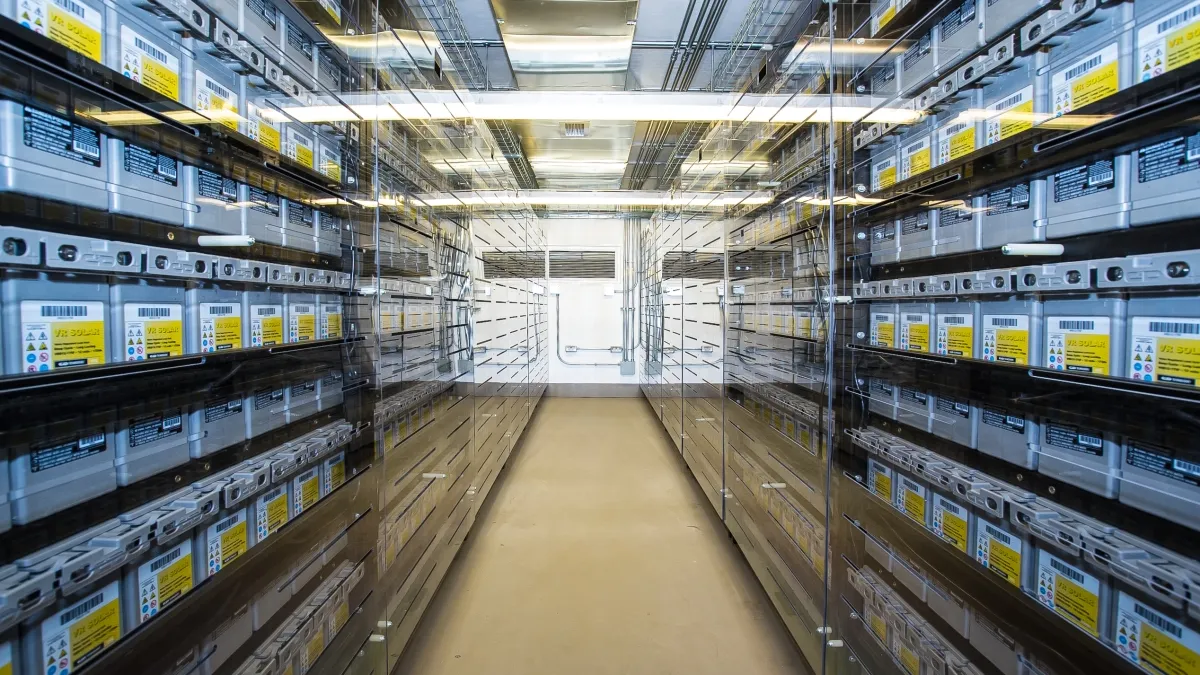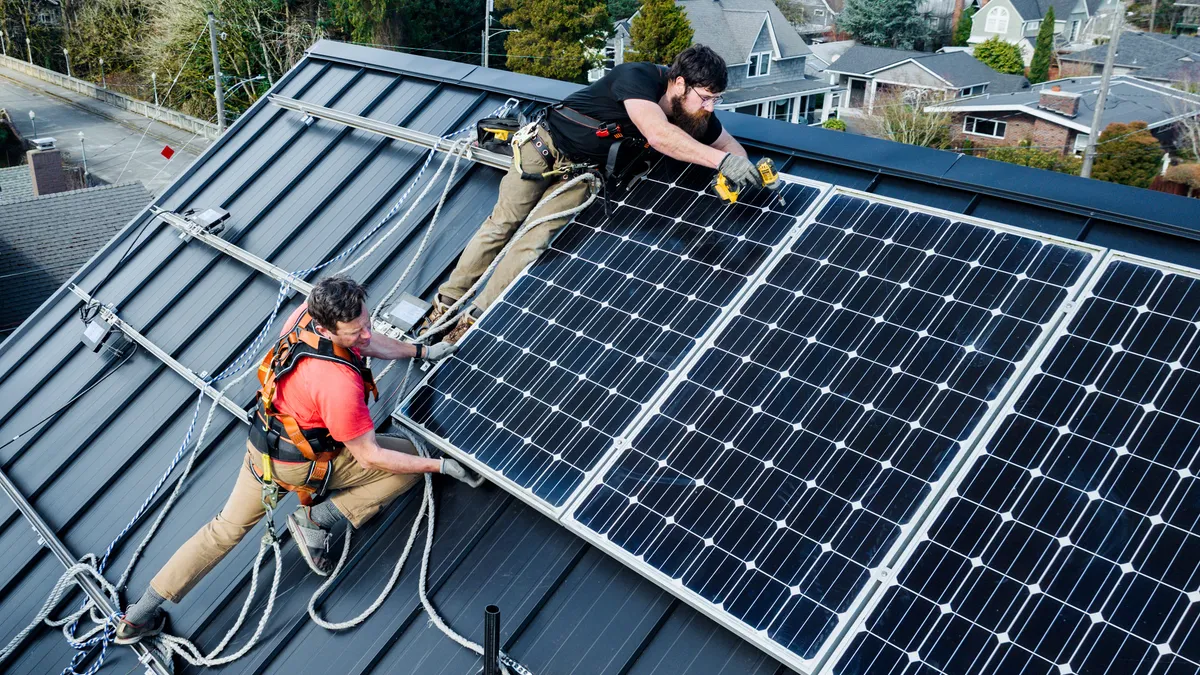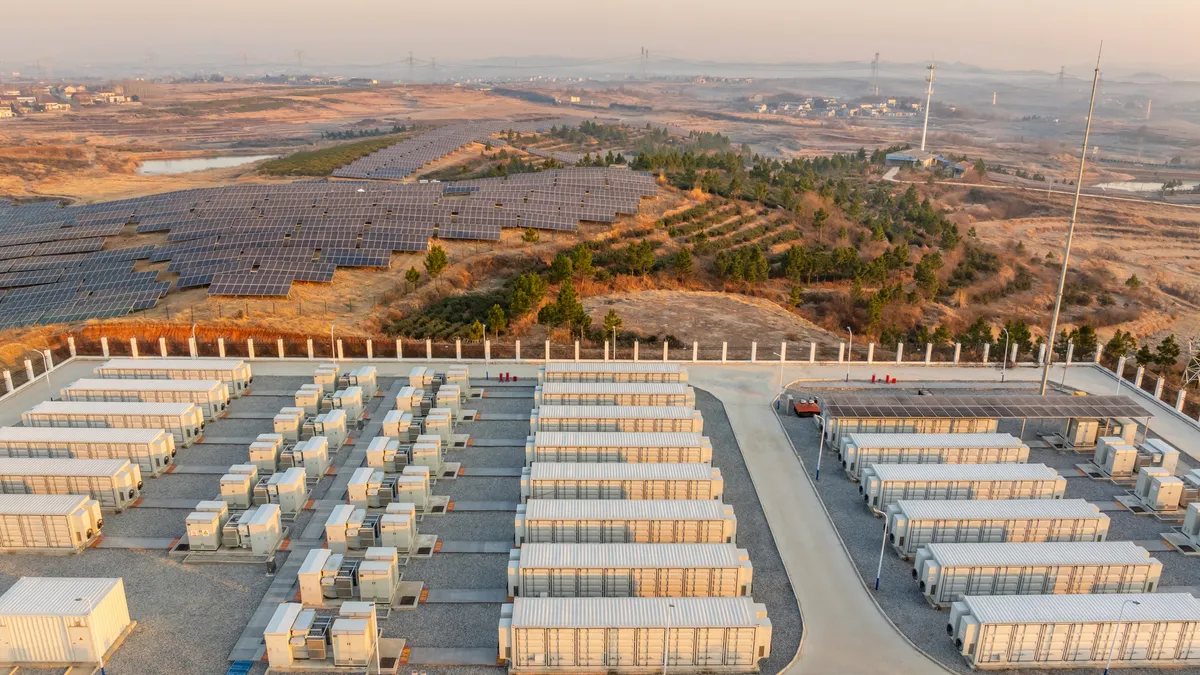Flow batteries have made strides recently in bringing down costs and improving efficiencies, but they are going to have a tough time competing with the entrenched market leader: lithium-ion batteries.
More than half of the 1,280 MWh of worldwide battery installations on the power grid since 2010 have been li-ion batteries, according to Department of Energy data. Looking at just 2015 and 2016, that share rises to 60%. In the United States, li-ion has an even bigger market share at 78% since 2010 and 97% since 2015.
By comparison, sodium-based batteries comprise about 30% of the worldwide grid storage market and flow batteries just 7%.
But it seems that just about every other week, researchers announce advances they say will make flow batteries cheaper, safer and more competitive when stacked up against li-ion batteries.
Theoretically flow batteries would be the logical choice for utility-scale grid applications. Flow batteries exchange negatively and positively charged fluids to produce electrical current. There is also relatively little degradation of the fluids, giving them longer charge-discharge cycles and longer life spans. They can also be scaled to match growing needs relatively by increasing the amount of fluid in the tanks.
But some of the disadvantages for flow batteries include expensive fluids that are also corrosive or toxic, and the balance of system costs are relatively high along with the parasitic (on-site) load needed to power the pumps.
The market leader in flow battery chemistry is vanadium, but researchers are working on other chemistries to bring down costs and improve the safety and environmental profile of flow batteries.
Just last month, researchers at Harvard University said they had developed an aqueous organic and organometallic redox flow battery that uses a neutral, non-corrosive liquid. And researchers at the universities of Michigan and Utah last month said they have found a way using computer modeling to devise a flow battery anolyte that is 1,000 times more stable than existing compounds.
Researchers are also tweaking less exotic compounds, such as derivatives of a chemical based on vitamin B2, in an effort to improve flow battery chemistry.
There have even been more real-world advances, such as Primus Power’s recent announcement that it has begun production of flow battery that the company says can last for 20 years and costs 50% less than conventional li-ion battery systems.
But part of the problem with flow batteries is that most of the advances to date have been in the laboratory. Li-ion batteries, on the other hand, have a long track record of in-field installations in everything from computers and smart phones to electric vehicles and megawatt scale grid-connected storage facilities. In short, li-ion batteries have a head start in the race for market share.
Can flow batteries catch up to li-ion?
In a recent report, analysts at investment research firm SSR LLC said: “The window for these other technologies may be closing under the weight of lithium ion’s momentum.”
Analysts Eric Selmon and Hugh Wynne concede that li-ion batteries compete with several other commercially deployed battery technologies that have performance characteristics better suited for utility-scale storage.
Flow batteries and sodium sulfur batteries, for instance, have longer discharge times and life spans. Flow batteries are also generally safer than li-ion batteries. And zinc-air batteries have a longer life span, greater safety and lower costs than li-ion batteries.
Selmon and Wynne also noted that capital costs for li-ion batteries are not much lower than those of competing technologies, but, they said, li-ion batteries have the momentum of economies of scale and a rapidly declining cost curve behind them.
The cost of li-ion battery packs has dropped from $1,000/kWh in 2010 to $350/kWh in 2015 and as low as $190/kWh in 2016, according to Selmon and Wynne.
Those cost declines are a reflection of rapid rise in electric vehicle production and sales. As the sale of li-ion battery packs for EVs rises, the cost of the batteries continues to decline. Li-ion batteries sold for EVs have gone from 250 MWh in 2010 to more than 52,000 MWh in 2016. Large format li-ion battery pack costs have gone from $1,000/kWh in 2010 to $350 in 2015.
Selmon and Wynne argue that the rapid growth of li-ion battery deployment on the power grid since 2013 could reflect, with a brief lag, the impact of the large decline in cost of lithium ion batteries from 2010 to 2012 and again from 2014 to 2015.
“If that is true,” they said, “the 45% decline in the cost of lithium ion battery packs reported by manufactures in 2016 may presage another boost to the growth of lithium ion on the grid.”
If the cost of li-ion batteries continues to decline faster than that of the other battery technologies, the cost difference may overwhelm the operational advantages of other technologies, said Selmon and Wynne. “Competing battery technologies may be limited to niche applications,” they said.




















